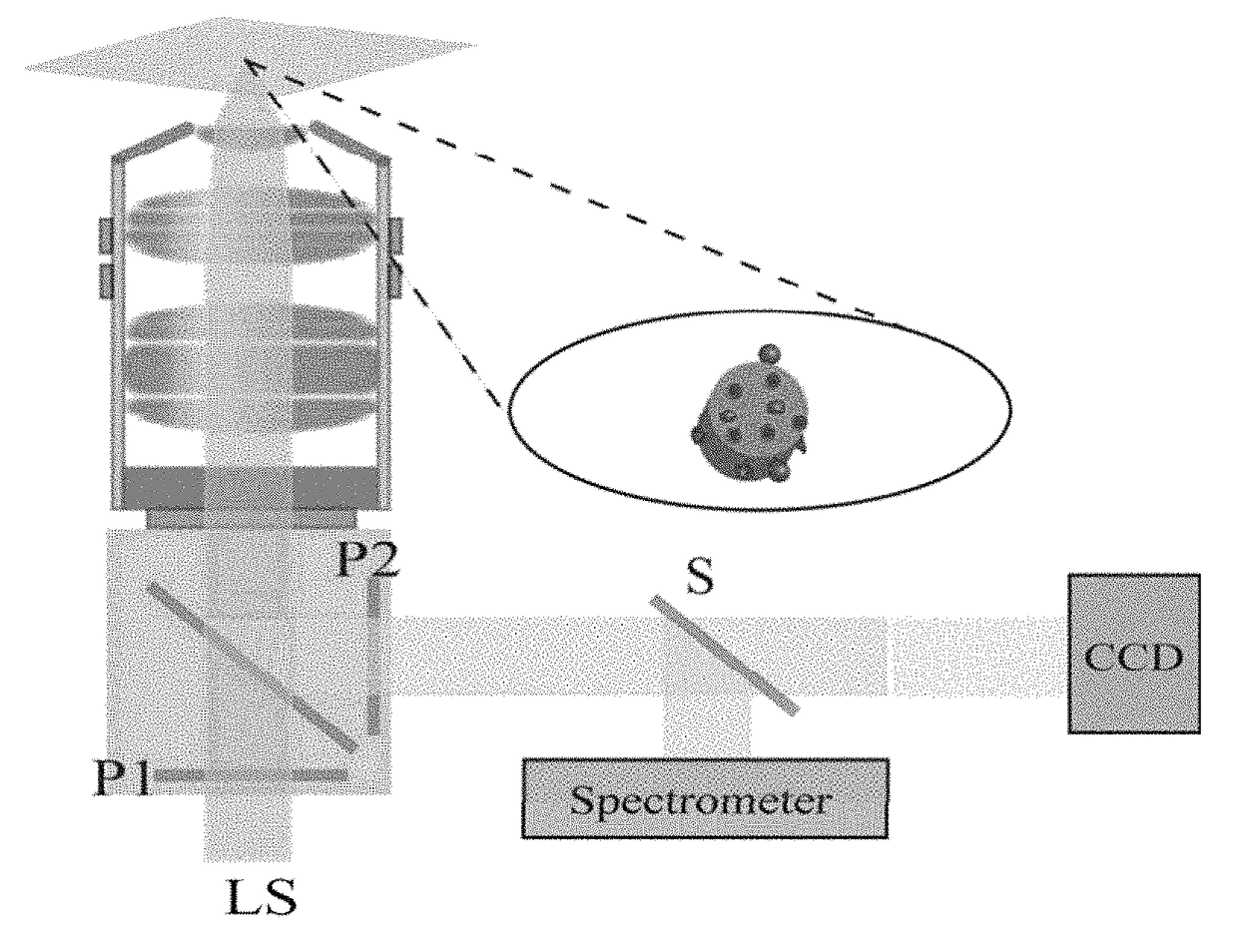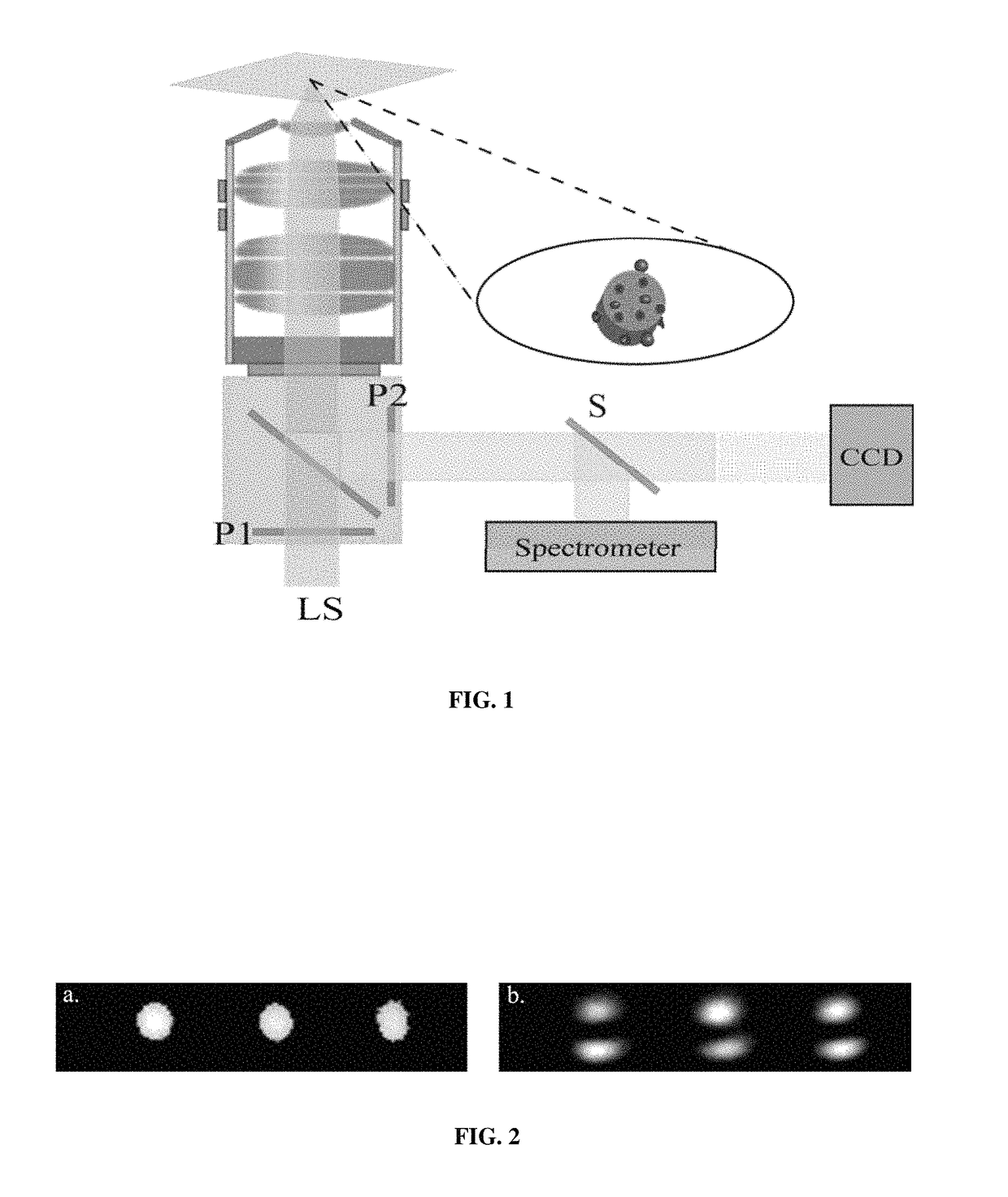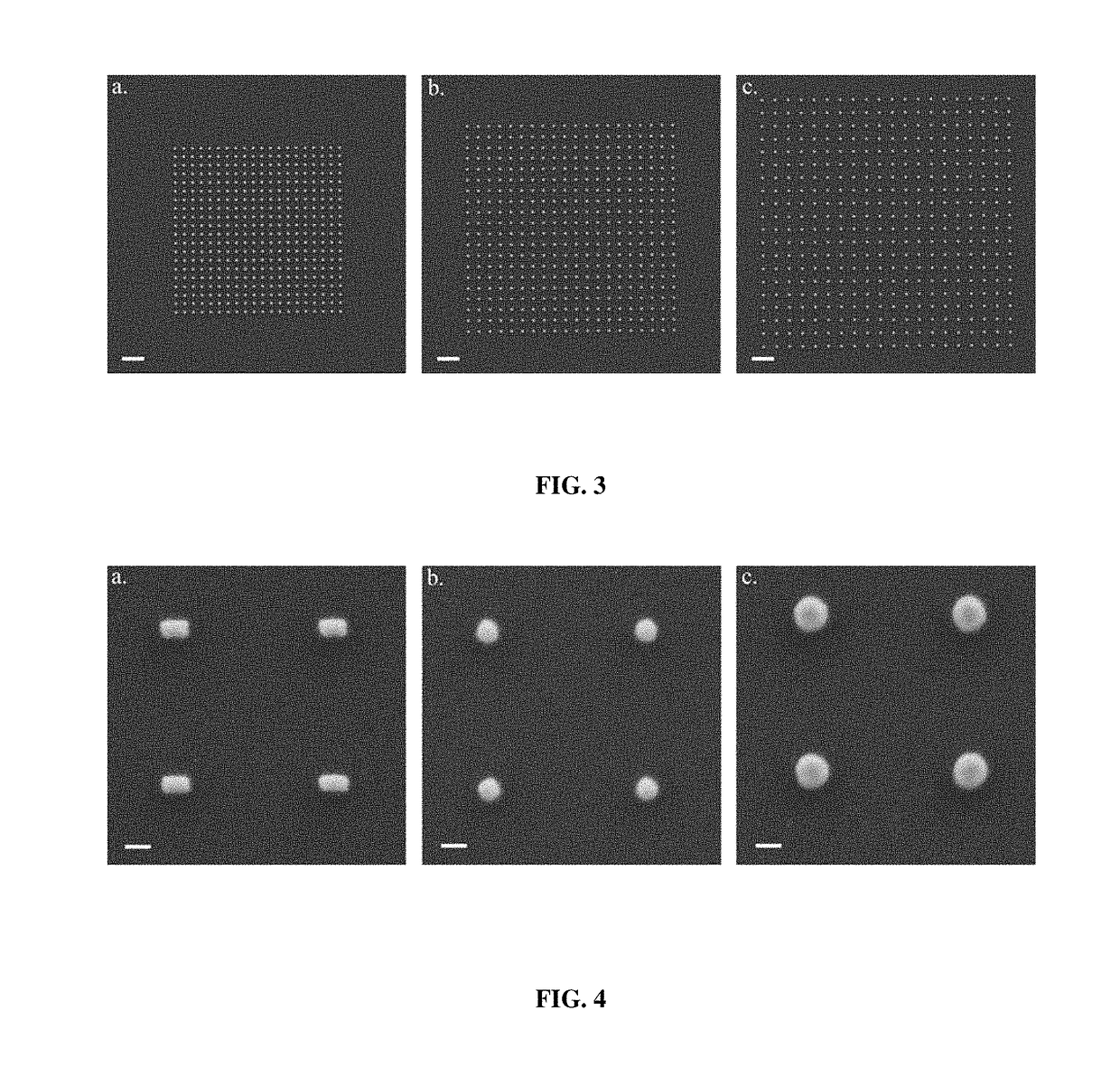Light microscopy chips and data analysis methodology for quantitative localized surface plasmon resonance (LSPR) biosensing and imaging
a technology of localized surface plasmon and data analysis, applied in the field of light microscopy chips and quantitative analysis methodology for localized surface plasmon resonance (lspr) biosensing and imaging, can solve the problems of convolution of solution-based changes, limited imagery, etc., and achieve the effect of convenient integration
- Summary
- Abstract
- Description
- Claims
- Application Information
AI Technical Summary
Benefits of technology
Problems solved by technology
Method used
Image
Examples
Embodiment Construction
[0024]The present invention provides a methodology for the determination of the time-dependence of the surface-receptor fractional occupancy, f(t), based upon LSPR spectroscopic measurements using an array of functionalized gold plasmonic nanostructures. The nanostructures were patterned by electron-beam nanolithography (EBL) into 20×20 arrays and each array as a whole characterized spectroscopically in a reflected geometry on an inverted light microscope. The data analysis methodology of the present invention models the photon count in each spectrometer channel as the sum of a baseline scattering rate and a scattering term sensitive to the small dielectric perturbations due to the binding of biomolecules at the surface of the nanostructures. This non-linear least squares approach to the data analysis sums over hundreds of these channels, at each point in time, giving it a distinct statistical advantage over a single channel approach, such as monitoring the peak wavelength. In this ...
PUM
| Property | Measurement | Unit |
|---|---|---|
| size | aaaaa | aaaaa |
| diameter | aaaaa | aaaaa |
| diameter | aaaaa | aaaaa |
Abstract
Description
Claims
Application Information
 Login to View More
Login to View More - R&D
- Intellectual Property
- Life Sciences
- Materials
- Tech Scout
- Unparalleled Data Quality
- Higher Quality Content
- 60% Fewer Hallucinations
Browse by: Latest US Patents, China's latest patents, Technical Efficacy Thesaurus, Application Domain, Technology Topic, Popular Technical Reports.
© 2025 PatSnap. All rights reserved.Legal|Privacy policy|Modern Slavery Act Transparency Statement|Sitemap|About US| Contact US: help@patsnap.com



